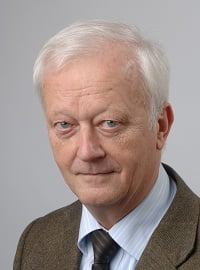By Petar Milovanovic
Vitamin D is known as “sunshine vitamin,” and exposure to sunshine is recommended to stimulate vitamin D production in the skin. Thus, it is interesting to examine vitamin D status in populations living in tropical climates with abundant sunshine. In this context, there is a recent study on 25(OH)D levels in older adults in Hawaii, reporting that more than a third of the older population is “deficient or insufficient” in vitamin D, despite living in one of the areas with abundant sunshine. The study showed that mean serum 25(OH)D levels in 55–65-year-old individuals were overall sufficient (34.3 ng/mL); however, nearly 40% of the participants had vitamin D “deficiency/insufficiency” defined as 25(OH)D level <30 ng/mL.
We asked Prof. Roger Bouillon from Catholic University of Leuven, a leading expert in vitamin D, to comment on these apparently counterintuitive findings: “The Hawaii study on vitamin D status conveys a few important messages. First, the mean oral intake of vitamin D in Hawaii is well below 5 µg per day and thus largely insufficient to generate a healthy vitamin D status. This is very similar to the situation in North America and Europe. Therefore, most of the vitamin D comes from endogenous synthesis and requires exposure of the skin to UVB light. Therefore, it is no surprise that in the Northern as well as in the Southern hemisphere the highest 25(OH)D concentrations are found in summertime. One notable exception is the Middle East as so many people avoid all exposure to sunlight in the extremely hot summertime that the highest levels are found in their ‘winter’ time. Second, the authors conclude that one third of the Hawaiian population is confronted with ‘vitamin D deficiency/insufficiency.’ I do not agree with that interpretation as vitamin D deficiency is usually defined by 25(OH)D values below 20 ng/ml by most guidelines (Bouillon 2017) including the recent consensus ECTS document (Lips et al 2020). Only about 7% of the Hawaiian population lives with such low concentrations in summertime and no Whites or native Hawaiians have such low levels (only Filipinos with darker skin have such low levels). In the US, about 5% of the population has such low levels, whereas much higher percentages are found in Western Europe or even Africa (especially North and South Africa). The Endocrine Society defined serum 25(OH)D levels between 20 and 30 ng/ml as ‘insufficiency’ but there are surprisingly few arguments for health consequences of such ‘insufficiency.’ Therefore, the Hawaiian study confirms the essential role of sunlight for an adequate vitamin D status but the authors largely exaggerate the assumed poor vitamin D status.”
Hawaii study on vitamin D status conveys a few important messages. First, the mean oral intake of vitamin D in Hawaii is well below 5 µg per day and thus largely insufficient to generate a healthy vitamin D status. This is very similar to the situation in North America and Europe. Therefore, most of the vitamin D comes from endogenous synthesis and requires exposure of the skin to UVB light. Therefore, it is no surprise that in the Northern as well as in the Southern hemisphere the highest 25(OH)D concentrations are found in summertime. One notable exception is the Middle East as so many people avoid all exposure to sunlight in the extremely hot summertime that the highest levels are found in their ‘winter’ time. Second, the authors conclude that one third of the Hawaiian population is confronted with ‘vitamin D deficiency/insufficiency.’ I do not agree with that interpretation as vitamin D deficiency is usually defined by 25(OH)D values below 20 ng/ml by most guidelines (Bouillon 2017) including the recent consensus ECTS document (Lips et al 2020). Only about 7% of the Hawaiian population lives with such low concentrations in summertime and no Whites or native Hawaiians have such low levels (only Filipinos with darker skin have such low levels). In the US, about 5% of the population has such low levels, whereas much higher percentages are found in Western Europe or even Africa (especially North and South Africa). The Endocrine Society defined serum 25(OH)D levels between 20 and 30 ng/ml as ‘insufficiency’ but there are surprisingly few arguments for health consequences of such ‘insufficiency.’ Therefore, the Hawaiian study confirms the essential role of sunlight for an adequate vitamin D status but the authors largely exaggerate the assumed poor vitamin D status.”
Indeed, on the example of the recent case study on vitamin D status in Hawaii, Prof. Bouillon reminded us to read literature critically with regard to the used definitions and thresholds of vitamin D deficiency, and gave us valuable hints on the risks of erroneous and oversimplified interpretations related to the vitamin D status, thereby further justifying the need to talk about the vitamin D topic over and over.